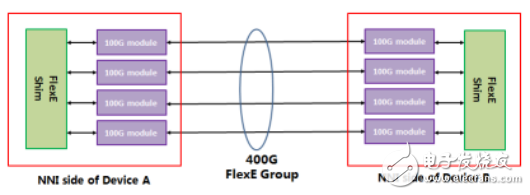A disruptive revolution in networks and technologies has arrived, and the 5G transformation of Ethernet is also evolving smoothly. This paper will focus on the analysis of the 5G Flexhaul bearer solution innovation technology - FlexE Tunnel, to solve the problem of excessive wavelength and low load carrying efficiency of the wavelength punch-through solution. The soft slicing technology has a large delay and cannot be physically isolated.
Faced with the multi-scene and differentiated needs of the Internet of Everything in the 5G era, the 5G bearer will usher in unprecedented opportunities and challenges, and the disruptive changes in bearer networks and technologies will also be imperative.
For the 5G bearer network, in addition to the large bandwidth technology, the telecom network requirements such as end-to-end service, physical isolation of traffic, low latency, and network protection should be considered. For the bearing requirements of 5G networks, ZTE has innovatively proposed the Flexhaul solution. Flexhaul is a new generation of end-to-end network solutions for 5G bearers, providing a complete technical system based on SDN from L3 to L0. The architecture is shown in Figure 1. The Flexhaul solution supports L2/L3VPN services in L3, SR/MPLS technology in L2, FlexE technology in L1, and innovation and expansion in standard FlexE technology. It implements L1 layer end-to-end tunnel FlexE Tunnel and provides L1. Switching, OAM and protection; Supporting DWDM technology in L0 provides good scalability of the network and ensures subsequent smooth evolution.

Figure 1. ZTE's 5G Flexhaul bearer architecture
Flexhaul supports a flat network architecture, and implements multi-wavelength and multi-link bandwidth binding based on FlexE technology, which can flexibly expand networking capacity and greatly enhance bandwidth scalability. In order to meet the 5G uRLLC low-latency service, ZTE's innovative FlexE Tunnel technology extends FlexE from the interface level to the network-level technology and provides network segmentation based on FlexE Tunnel to meet the requirements of low latency and high reliability. As shown in Figure 2 below, Flexhaul can split network resources (including bandwidth, delay processing function, CPU, VPN, etc.) into multiple virtual end-to-end networks based on FlexE Tunnel. Each network slice is on the forwarding plane and control plane. Logical isolation on the management plane, adapt to various types of services and meet the different needs of users. At the same time, the protection switching based on FlexE tunnel technology can be achieved within 1ms, and the carrier-class protection is upgraded to the industrial control level. For the uRLLC service, the FlexE tunnel technology is used to solve the problem that the wavelength punching scheme has too large granularity and low carrying efficiency. The soft slicing technology has a large delay and cannot be physically isolated.

Figure 2. Network slice based on FlexE Tunnel
Below we focus on the innovative technology of the 5G Flexhaul bearer solution - FlexE Tunnel.
First, the origin of FlexE - decoupling of service rate and physical portIn January 2011, OIF (OpTIcal InterconnecTIon Forum) established the flexible Ethernet research group, released the draft in July 2015, and released the flexible standard (FlexE) 1.0 standard content (OIF-FLEXE-01.0) in March 2016. Drafting 2.0 standard content. FlexE technology decouples the service rate and physical channel rate based on Ethernet technology. The physical interface rate does not have to be equal to the customer service rate. It can be flexible at other rates (such as the customer service rate is 400GE, but the physical channel PHY. The rate is 100GE or other rate). The customer service is not necessarily transmitted on one physical channel, but is bundled by multiple physical channels to form a virtual logical channel to pass. After the service rate and the physical channel rate are decoupled, the customer service speed can be diverse. The rate of the physical channel is also multiple and independent. The large-bandwidth customer service can use standard 25GE/100GE rate interfaces, port bundling and The time slot crossover technology easily realizes the gradual evolution of the service bandwidth 25G-"50G-"100G-"200G-"400G-"xT, and solves the problem of high cost performance of the high-speed physical channel.

Figure 3. FlexE technology achieves flexible speed
Shenzhen Konchang Electronic Technology Co.,Ltd , https://www.konchangs.com